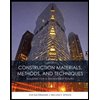Q3. Three concrete mixes with the same ingredients, except the amount of mixing water, and their slump values were obtained. Three 100 mm * 200 mm concrete cylinders were prepared for each mix. The cylinders were cured for 7 days and then tested for compressive strength. The test results are as shown in the table below. Assume that the aggregate was at the saturated surface-dry condition before adding mixing water. It is required to do the following: a. Plot the relationship between slump and amount of mixing water for all mixes Comment on the effect of increasing the amount of water on workability. b. Determine the compressive strength of each cylinder after 7 days. c. Determine the average compressive strength of each mix after 7 days. d. Using the Figure below, estimate the compressive strength after 28 days (fc) for each mix. e. Determine the w/c ratio for each mix. Plot the average fc values versus w/c ratios for all mixes. Comment on the effect of increasing the w/c ratio on the compressive strength
Q3. Three concrete mixes with the same ingredients, except the amount of mixing water, and their slump values were obtained. Three 100 mm * 200 mm concrete cylinders were prepared for each mix. The cylinders were cured for 7 days and then tested for compressive strength. The test results are as shown in the table below. Assume that the aggregate was at the saturated surface-dry condition before adding mixing water. It is required to do the following: a. Plot the relationship between slump and amount of mixing water for all mixes Comment on the effect of increasing the amount of water on workability. b. Determine the compressive strength of each cylinder after 7 days. c. Determine the average compressive strength of each mix after 7 days. d. Using the Figure below, estimate the compressive strength after 28 days (fc) for each mix. e. Determine the w/c ratio for each mix. Plot the average fc values versus w/c ratios for all mixes. Comment on the effect of increasing the w/c ratio on the compressive strength
Fundamentals of Geotechnical Engineering (MindTap Course List)
5th Edition
ISBN:9781305635180
Author:Braja M. Das, Nagaratnam Sivakugan
Publisher:Braja M. Das, Nagaratnam Sivakugan
Chapter2: Soil Deposits-origin, Grain-size, And Shape
Section: Chapter Questions
Problem 2.15CTP: In concrete work, Fuller and Thompson (1907) suggested that a dense packing of grains can be...
Related questions
Question

Transcribed Image Text:Mix
No.
1
2
3
Mass of
Cement
(kg)
10
10
10
concrete
Compressive strength, % of 28-day
Mass of
Water* Slump Cylinder
(kg)
(mm)
No.
moist-cured
5
5.5
6
150
125
100
* Assume that the water listed here is above the saturated surface-dry (SSD) condition of the aggregate.
75
50
25
40
OL
337
55
75
1
2
3
1
2
3
1
2
3
28
Estimated
Average
Compres-
Compressive Compressive sive Strength
Maximum Strength after Strength after after 28 Days
Load (kN) 7 Days (MPa) 7 Days (MPa) (MPa)
138.2
175.9
136.9
100.7
115.2
113.6
73.3
78.4
76.0
Moist-cured entire time
In air after 7 days
In air after 3 days
In air entire time
90
Age, days
180

Transcribed Image Text:Q3. Three concrete mixes with the same ingredients, except the amount of
mixing water, and their slump values were obtained. Three 100 mm * 200 mm
concrete cylinders were prepared for each mix. The cylinders were cured for 7
days and then tested for compressive strength. The test results are as shown in
the table below. Assume that the aggregate was at the saturated surface-dry
condition before adding mixing water.
It is required to do the following:
a. Plot the relationship between slump and amount of mixing water for all mixes.
Comment on the effect of increasing the amount of water on workability.
b. Determine the compressive strength of each cylinder after 7 days.
c. Determine the average compressive strength of each mix after 7 days.
d. Using the Figure below, estimate the compressive strength after 28 days (fc)
for each mix.
e. Determine the w/c ratio for each mix. Plot the average fc values versus w/c
ratios for all mixes. Comment on the effect of increasing the w/c ratio on the
compressive strength
Expert Solution
This question has been solved!
Explore an expertly crafted, step-by-step solution for a thorough understanding of key concepts.
This is a popular solution!
Trending now
This is a popular solution!
Step by step
Solved in 5 steps with 8 images

Knowledge Booster
Learn more about
Need a deep-dive on the concept behind this application? Look no further. Learn more about this topic, civil-engineering and related others by exploring similar questions and additional content below.Recommended textbooks for you

Fundamentals of Geotechnical Engineering (MindTap…
Civil Engineering
ISBN:
9781305635180
Author:
Braja M. Das, Nagaratnam Sivakugan
Publisher:
Cengage Learning

Traffic and Highway Engineering
Civil Engineering
ISBN:
9781305156241
Author:
Garber, Nicholas J.
Publisher:
Cengage Learning

Fundamentals Of Construction Estimating
Civil Engineering
ISBN:
9781337399395
Author:
Pratt, David J.
Publisher:
Cengage,

Fundamentals of Geotechnical Engineering (MindTap…
Civil Engineering
ISBN:
9781305635180
Author:
Braja M. Das, Nagaratnam Sivakugan
Publisher:
Cengage Learning

Traffic and Highway Engineering
Civil Engineering
ISBN:
9781305156241
Author:
Garber, Nicholas J.
Publisher:
Cengage Learning

Fundamentals Of Construction Estimating
Civil Engineering
ISBN:
9781337399395
Author:
Pratt, David J.
Publisher:
Cengage,

Materials Science And Engineering Properties
Civil Engineering
ISBN:
9781111988609
Author:
Charles Gilmore
Publisher:
Cengage Learning

Solid Waste Engineering
Civil Engineering
ISBN:
9781305635203
Author:
Worrell, William A.
Publisher:
Cengage Learning,

Construction Materials, Methods and Techniques (M…
Civil Engineering
ISBN:
9781305086272
Author:
William P. Spence, Eva Kultermann
Publisher:
Cengage Learning